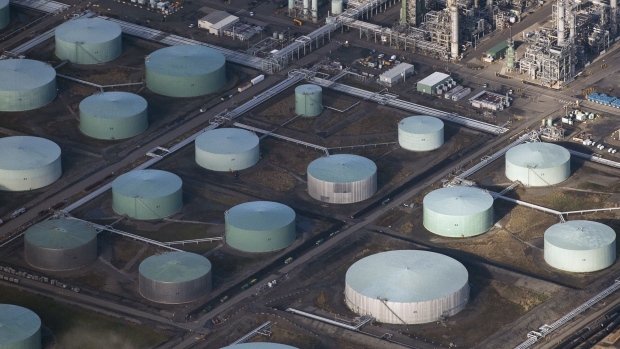Mar 14, 2024
Oil Markets Face Supply Deficit All Year on OPEC+ Cuts, IEA Says
, Bloomberg News

(Bloomberg) -- Global oil markets face a supply deficit throughout 2024, instead of the surplus previously expected, assuming that OPEC+ continues output cuts in the second half of the year, according to the International Energy Agency.
Saudi Arabia and its partners agreed earlier this month to prolong roughly 2 million barrels day of production curbs to the middle of the year. The IEA assumes the measures will in fact continue until the end of 2024, reflecting the “bloc’s efforts to balance oil markets,” it said in a report.
“The changed assumptions shift our implied balance into a slight deficit rather than the hefty build in last month’s report,” said the Paris-based agency, which advises major economies. It also boosted forecasts for global demand this year.
While OPEC+ hasn’t fully implemented its latest curbs, the measures are helping buoy crude prices against slowing consumption growth and abundant supplies from the Americas. Brent futures closed at a four-month high above $84 a barrel on Wednesday.
The IEA bolstered forecasts for world oil demand growth in 2024 by 110,000 barrels to 1.3 million barrels a day, on a stronger US outlook and the increased need for ship fuel, as vessels take longer routes to avoid Houthi attacks in the Red Sea.
As a result of the diversions, the amount of oil aboard ships at sea soared to almost 1.9 billion barrels at the end of last month, the second-highest level since the height of the Covid-19 pandemic, according to the report.
Global Demand
Global oil demand will average a record 103.2 million barrels a day this year, it said. The agency has boosted its 2024 growth forecast by roughly 50% since it was introduced last June, but it remains below growth rates expected by major traders like Vitol Group. The Organization of Petroleum Exporting Countries sees 2.2 million barrels a day of demand growth.
The agency estimates that consumption growth is decelerating sharply from last year’s 2.3 million barrels a day, as the post-pandemic rebound has run its course and the transition away from fossil fuels gathers pace. China’s expansion will slow by two-thirds this year “under the gathering weight of a challenging economic environment and slower expansion in its petrochemical sector,” it added.
Rising oil consumption this year will be surpassed by swelling supplies from the Americas — primarily the US, Brazil, Canada and Guyana — which would leave world markets in surplus were it not for the OPEC+ cutbacks.
If OPEC+ were to fully unwind its current production cuts from July, the oil market could return to surplus in the second half, Toril Bosoni, head of the oil markets division at the IEA, said in a Bloomberg television interview.
Unusual Move
Assuming an extension of OPEC+ curbs before it’s officially confirmed is an unusual move by the IEA, which typically waits for policies to be announced before factoring them in. The decision is based on repeated previous extensions by the alliance, the agency said. Group leader Saudi Arabia has often urged other members to be cautious in restoring output.
OPEC+ will meet to decide whether it actually does extend cuts into the second half of the year at its Vienna headquarters on June 1.
(Updates with comment from IEA analyst in 10th paragraph.)
©2024 Bloomberg L.P.





